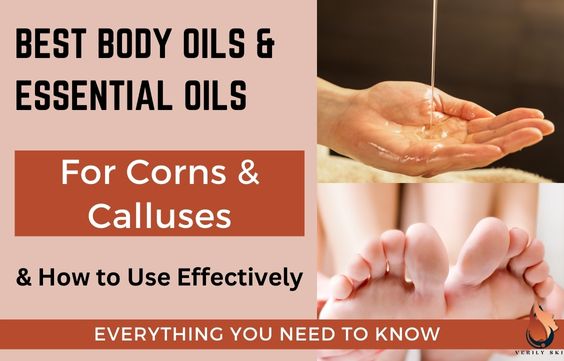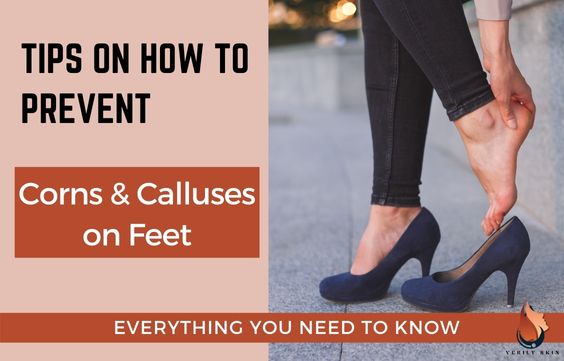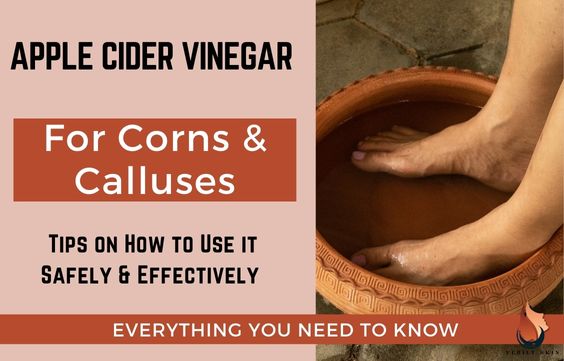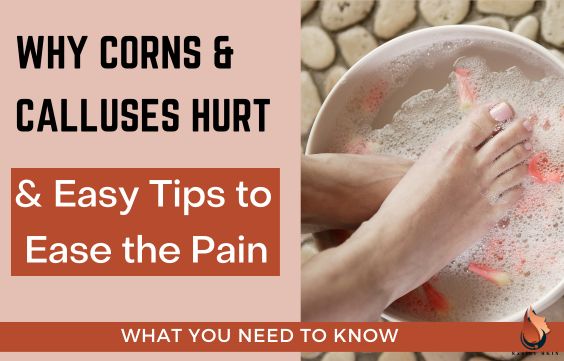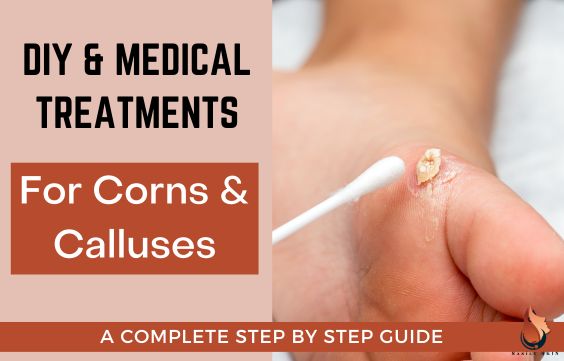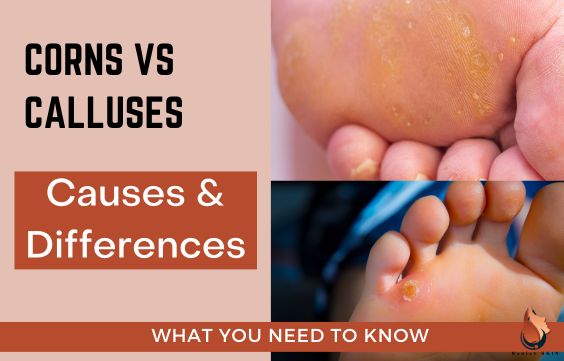Hydrogen Peroxide for Corns & Calluses: How to Safely Use
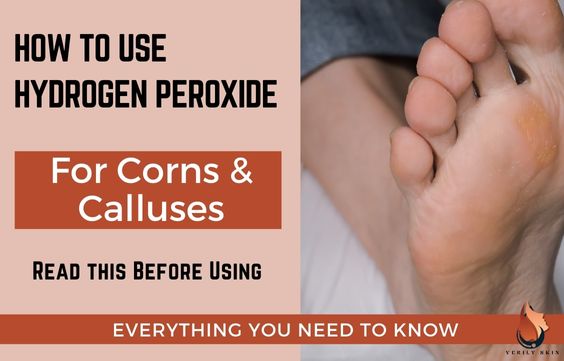
Hydrogen Peroxide can be used for various issues relative to the skin, hair, nails, feet, and even teeth, However, the big question we are tackling today is whether it can be used to treat corns & calluses effectively.
Hydrogen Peroxide is a colorless, odorless, natural chemical. However, for its uses in skincare, it is synthesized in a lab in concentrations that range from 3% to about 9%.
Does Hydrogen Peroxide Remove Corns & Calluses
Hydrogen will soften the skin over and around corns and calluses, making it easier for them to be exfoliated, filed and removed.
While dermatologists do not recommend using hydrogen peroxide on the face and other areas of the skin, it can be safely and effectively used to help soften corns & calluses, cracked heals, and treat athlete’s foot and nail fungi.
Another great treatment for calluses and corns is to use Salicylic acid, click here to learn more.
Related Article – Why Do Corns & Calluses Hurt & Easy Tips to Ease the Pain
How Does Hydrogen Peroxide Help To Get Rid Of Corns & Calluses
Hydrogen Peroxide is an oxidizing agent and it damages cells through oxidative stress.
This means that it creates more free radicals in your body than there are antioxidants to get rid of them. This excess of free radicals leads to inflammation in the skin which causes the fragmentation of collagen and fibroblasts.
Collagen and fibroblasts are what hold the skin together by maintaining inter-cellular bonds and healthy connective tissue. When these are damaged, the skin cells become soft and loose, easy to be sloughed off or removed.
You need to read my article on Quick Remedies & Medical Treatments for Corns & Calluses
How to Use Apple Cider Vinegar For Corns & Calluses – What To Know
Best Essential Oils & Body Oils to Treat Corns & Calluses
How To Use Hydrogen Peroxide On Corns & Calluses
The safest and most effective way to use Hydrogen Peroxide on corns and calluses is in a foot soak.
However, keep in mind that hydrogen peroxide can damage your skin if you do not use it correctly. This ingredient needs to be used with caution.
An alternative to a foot soak is to apply the mixture to the corn and/or callus itself by soaking a cotton pad and taping it directly over the area. This will prevent the hydrogen peroxide from getting on the other areas of your skin.
Related Articles –
Infected Corns & Calluses – How To Spot & Treat
Tips on How to Prevent Calluses on Your Hands
Hydrogen Peroxide & Water Foot Soak Recipe
Ingredients/Materials:
- Water
- 3% Hydrogen Peroxide
- Measuring Cup
- Tub/ Soaking Basin
- Towel
Directions:
- In your tub or basin, add 2 cups of 3% hydrogen peroxide to 2 cups of warm or room temperature water (you may add more water or less hydrogen peroxide as needed).
- Mix well and let the solution combine and settle.
- Place your cleaned feet in the solution and let them soak for about 20-30 minutes.
- After soaking, remove your feet and gently pat dry with a clean towel.
Video: Using Hydrogen Peroxide & Water as a foot soak
What Concentration Of Hydrogen Peroxide To Use On Corns & Calluses
Foot care experts suggest using 3% hydrogen peroxide diluted with water as your foot soak.
I recommend that you buy your hydrogen peroxide from a pharmacy where you can ask the pharmacist for the lowest grade that is safe for topical use.
Since you will most likely be soaking your whole foot in the mixture, keep in mind that the hydrogen peroxide will also affect the other areas of your skin.
However, if you prefer to soak a cotton pad and place it directly on the callus and/or corn, you may consider using a higher concentration.
Never try to use hydrogen peroxide that is higher than 9% on your skin and always dilute it with equal parts or more water.
Related Articles:
Corns vs Calluses – What are the Differences & Types
7 Tips on How to Prevent Calluses & Corns on Your Feet
How Long To Soak Corns & Calluses in Hydrogen Peroxide
You should soak your corns and calluses in your hydrogen peroxide and water foot soak for about 15-20 minutes.
This will give your skin enough time to soak up the moisture and become soft. It will also give the skin around and over the corn and/or callus to be adequately affected by the hydrogen peroxide.
However, if your corn and/or callus is thicker, you may need to soak it for longer. You may soak your feet for as long as your skin can tolerate the soak without being irritated or negatively affected by the hydrogen peroxide.
Related Article – How Long Calluses & Corns Last & Do They Go Away Naturally
How Often To Use Hydrogen Peroxide For Corns & Calluses
You may soak your corn and/or callus in hydrogen peroxide and water each time before you are ready to file them or exfoliate them with your pumice stone or file.
How often you do this will depend on personal preference, the thickness of the corn and/or callus, and how your skin reacts to the whole process.
Remember that you will need to treat your corn and/or callus gradually. Over-exfoliation or over-filing may cause abrasion and ulcerations that can extend too deep if you are not careful. This can cause bleeding and infection of the delicate skin under the corn and/or callus.
Additionally, soaking your corn and/or callus one time may not soften it sufficiently. So, you will need to do this consistently. The more you do it, the softer the corn and/or callus will become.
How Long Will Hydrogen Peroxide Take To Help Corns & Calluses
Generally, you should see differences in your corn and/or calluses within 1-2 weeks of consistently using hydrogen peroxide.
However, this will greatly depend on:
- How consistent you are with your treatment
- Whether you are also exfoliating or filing your corn and/or calluses every time
- How thick your corn and/or callus is
- The condition and reaction of your skin
- Lifestyle (wearing tight shoes and other habits and keep corns and/or calluses from going away faster)
If you want to use a stronger concentration of hydrogen peroxide (more than 3-9%) or if your corns and/or calluses are painful, bleeding, or just not going away, I recommend that you visit a podiatrist and/or a dermatologist. They will be able to safely and more effectively help you to treat and prevent corns and calluses.
Sources:
Oxidative Stress: Definition, Effects on the Body, and Prevention
Hydrogen peroxide in dermatology
An expert’s guide to hydrogen peroxide uses for hair, skin and nails
Hydrogen Peroxide To Soften Corns And Calluses – THE INDIAN SPOT

